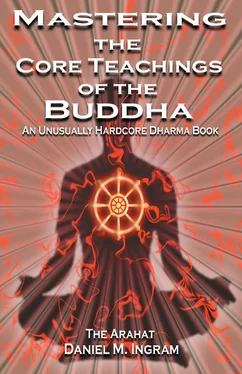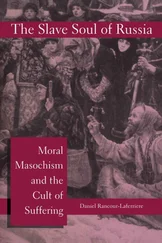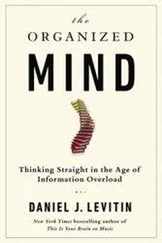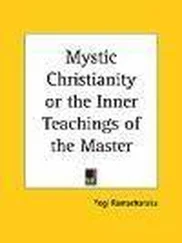Daniel Ingram - Mastering the Core Teachings of Buddha - An Unusually Hardcore Dharma Book
Здесь есть возможность читать онлайн «Daniel Ingram - Mastering the Core Teachings of Buddha - An Unusually Hardcore Dharma Book» весь текст электронной книги совершенно бесплатно (целиком полную версию без сокращений). В некоторых случаях можно слушать аудио, скачать через торрент в формате fb2 и присутствует краткое содержание. Год выпуска: 2009, ISBN: 2009, Издательство: Aeon Books, Жанр: Старинная литература, на русском языке. Описание произведения, (предисловие) а так же отзывы посетителей доступны на портале библиотеки ЛибКат.
- Название:Mastering the Core Teachings of Buddha - An Unusually Hardcore Dharma Book
- Автор:
- Издательство:Aeon Books
- Жанр:
- Год:2009
- ISBN:9781904658405
- Рейтинг книги:5 / 5. Голосов: 1
-
Избранное:Добавить в избранное
- Отзывы:
-
Ваша оценка:
- 100
- 1
- 2
- 3
- 4
- 5
Mastering the Core Teachings of Buddha - An Unusually Hardcore Dharma Book: краткое содержание, описание и аннотация
Предлагаем к чтению аннотацию, описание, краткое содержание или предисловие (зависит от того, что написал сам автор книги «Mastering the Core Teachings of Buddha - An Unusually Hardcore Dharma Book»). Если вы не нашли необходимую информацию о книге — напишите в комментариях, мы постараемся отыскать её.
Mastering the Core Teachings of Buddha - An Unusually Hardcore Dharma Book — читать онлайн бесплатно полную книгу (весь текст) целиком
Ниже представлен текст книги, разбитый по страницам. Система сохранения места последней прочитанной страницы, позволяет с удобством читать онлайн бесплатно книгу «Mastering the Core Teachings of Buddha - An Unusually Hardcore Dharma Book», без необходимости каждый раз заново искать на чём Вы остановились. Поставьте закладку, и сможете в любой момент перейти на страницу, на которой закончили чтение.
Интервал:
Закладка:
Part I contains some traditional lists that were taught by the Buddha and relate directly to spiritual training. They make important and practical points in very concise ways. These teachings were made compact and portable on purpose so that people could remember them and use them. It is their very simplicity that makes them so practical and down to earth.
I, however, am going to take these very compact teachings and go on and on about them. It turns out that the Buddha sometimes made things so simple that we are left wondering what the heck he was talking about and how to do something useful with his teachings. Basically he was saying, “Get to know your actual reality really, really, really well, and try to do right by yourself and the world.” As we all know, this is not always as easy as it sounds, so that is why I include all of the additional commentary.
Thus, these teachings are designed to help people get in touch with their reality in some way that makes a difference. They can also help people avoid some of the common pitfalls on the spiritual path and in life in general, some of which I will talk about later.
To that end, we will begin with an introduction to the Three Trainings, morality , conce ntratio n and wisdom . The Three
Introduction to Part I
Trainings encompass the sum total of the Buddhist path. Thus, they will be used as the framework for this book. The Three Trainings involve skills that we consciously and explicitly try to master. Each training has its own specific set of assumptions, agendas, practices, and standards for success in those practices. These are actually fairly different from each other, and all sorts of problems can arise if we mix these up and use the assumptions of one training when pursuing the others. Each training also has its common pitfalls, limitations, and shadow sides. These are rarely made clear, and the failure to do so has caused much confusion.
Thus, I will do my best to make them clear, particularly in Part II (Light and Shadows). Each training also has specific standards for success and mastery. These can sometimes seem a bit technical, particularly the maps of the high concentration states and the stages of insight, so I will wait until Part III (Mastery) to present these in order to keep Part I focused on the basic frameworks and practices that make the whole thing possible in the first place.
While I think that each part of this book contributes to the whole, there are reasons why you might want to skip to certain sections first and fill in the rest later. For instance, if you are having powerful visions or Kundalini experiences, you might want to read the first few chapters of Part III and then go back and read the rest. If you are simply interested in the maps of the stages of insight, go straight to the chapter called The Progress of Insight. If you just want to get right to some core insight practices, read the chapters on The Three Characteristics and The Seven Factors of Enlightenment. Should you be in a mood for some scathing social commentary, the beginning of Part II is for you. If you just want to hear my take on enlightenment, then Models of the Stages of Enlightenment might be a good place to start. I struggled for a long time debating whether to present the maps that tell what these practices lead to at the beginning or at the end of the book. I have included them last, but you might be the sort who wants to see them first, and if so you should read the chapter called The Three Characteristics and then skip straight to Part III. In my ideal world, everyone would read through this book two or three times cover-to-cover and then work on committing the more important sections to memory.
3
2.MORALITY, THE FIRST AND LAST TRAINING
The original Pali word for this training is sila, which I am translating as “morality.” People translate it in various ways, with some other possibilities being “virtue” and “decency.” Regardless of the word we choose, it is likely to have both positive and negative implications. If the word “morality” bothers you due to the associations that it brings to mind, take a look at the assumptions, agendas, and practices of this training and come up with your own word for it. I don’t think that it is so important what we call it. I do, however, think that we should give some attention to trying to live it.
From my point of view, training in morality has as its domain all of the ordinary ways that we live in the world. When we are trying to live the good life in a conventional sense, we are working on training in morality. When we are trying to work on our emotional, psychological and physical health, we are working at the level of training in morality.
When we philosophize, we are working on training in morality. When we exercise, we are working on training in morality. When we try to take care of ourselves or others, we are working on training in morality.
When we try to defend the environment, reform the government, or make this world a better place, we are working on training in morality.
When we try to find a good and helpful job, try to build a healthy marriage or raise healthy children, or shave our heads and move to a remote desert, we are working on training in morality. Whatever we do in the ordinary world that we think will be of some benefit to others or ourselves is an aspect of working on this first training.
The second two trainings, those having to do with attaining unusual states of mind and those having to do with ultimate realizations, have limits, in that we can master them absolutely. However, this cannot be said of the first training. There is no limit to the degree of skill that can be brought to how we live in the world. Thus, morality is also the last training, the training that we will have to work on for all of our life. We may be able to attain to astounding states of consciousness and understand the true nature of reality, but what people see and what is causal are the ways that these abilities and understandings translate into how we live in the world.
Morality, The First and Last TrainingMorality, The First and Last Training
There are basic assumptions that are extremely helpful when
undertaking training in morality. It is very helpful to assume that some sort of basic moral code is helpful for getting along in this world, and thus that there is some practical benefit to be derived from training in morality.
It is also helpful to assume in some loose and non-dogmatic way that the more good we do in the world, the more good there will be in that world, and thus the more good things will happen to us and all other beings. It is also worth assuming the corollary of this, that the more we do bad things in the world, the more bad things will be in that world for us and for all beings. These assumptions are not unique to Buddhism nor are they in any way extraordinary. Societies and traditions throughout the ages have advocated that we find a place in our life for these assumptions. Realize that defining bad and good is often very much a question of perspective, but don’t fall into the paralyzing trap of imagining that it is useless to try anyway. It is better to try to do your best and fail than not try at all.
Thus, we are assuming that what we think, say and do have
consequences. When undertaking training in morality, we are assuming that we can control what we think, say and do, thus creating consequences that are beneficial. Rather than accepting our current level of intellectual, emotional and psychological development as being beyond our power to change, we consciously and explicitly take the empowering view that we can work with these aspects of our lives and change them for the better. We assume that we can change our world and our attitudes towards our world. We take responsibility for our actions and their consequences.
Читать дальшеИнтервал:
Закладка:
Похожие книги на «Mastering the Core Teachings of Buddha - An Unusually Hardcore Dharma Book»
Представляем Вашему вниманию похожие книги на «Mastering the Core Teachings of Buddha - An Unusually Hardcore Dharma Book» списком для выбора. Мы отобрали схожую по названию и смыслу литературу в надежде предоставить читателям больше вариантов отыскать новые, интересные, ещё непрочитанные произведения.
Обсуждение, отзывы о книге «Mastering the Core Teachings of Buddha - An Unusually Hardcore Dharma Book» и просто собственные мнения читателей. Оставьте ваши комментарии, напишите, что Вы думаете о произведении, его смысле или главных героях. Укажите что конкретно понравилось, а что нет, и почему Вы так считаете.












